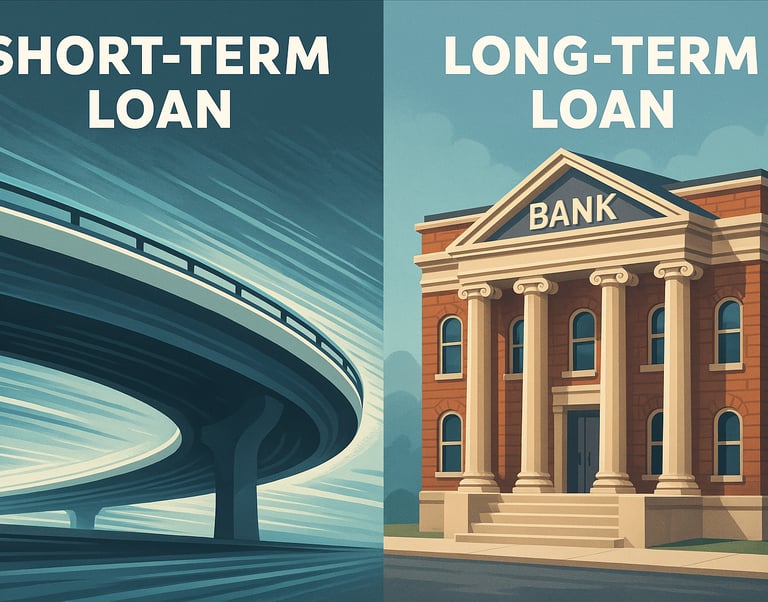Bridging Loans vs. Traditional Loans
🥊 What’s the Difference?
Bridging loans and traditional loans serve very different purposes. Understanding how they compare helps borrowers choose the right financial tool for the situation.
⏱️ Speed
Bridging Loan 🔥 Fast — funds in 3-14 days
Traditional loan🐢 Slow — 4-8 weeks approval
Bridging loans are built for urgency, like buying property at auction
or bridging a chain break.
📆 Term Length
Bridging Loan Traditional Loan Short-term (1–18 months) Long-term (5–30 years)
Traditional loans are for stability; bridging loans are temporary solutions.
💷 Interest Rates & Costs
Bridging Loan Traditional Loan 0.5%–1.5% per month 3%–6% annually
Bridging loans have higher rates but shorter durations. Fees may include arrangement, exit, and valuation costs.
🖼️ Image Prompt for DALL·E:
“Infographic showing interest rates comparison between short-term high-interest bridging loan vs low-interest long-term traditional loan — professional style”
📄 Eligibility
Bridging Loan Traditional Loan Flexible — credit score less important Strict — credit and income heavily reviewed
Bridging lenders care more about the asset and exit strategy than personal credit.
🧠 When to Use Which?
Scenario Best Option Buying at auction Bridging loan Renovating to flip Bridging loan Long-term home purchase Traditional loan Business equipment financing Traditional loan or business loan
🔍 Visual Recap
🎯 Summary
Use bridging loans when speed and
flexibility matters.
Use traditional loans when stability and lower costs are priorities.
The right tool depends on timing, purpose, and exit strategy.
"Click on the link" to move on to How to Qualify for a Bridging Loan




